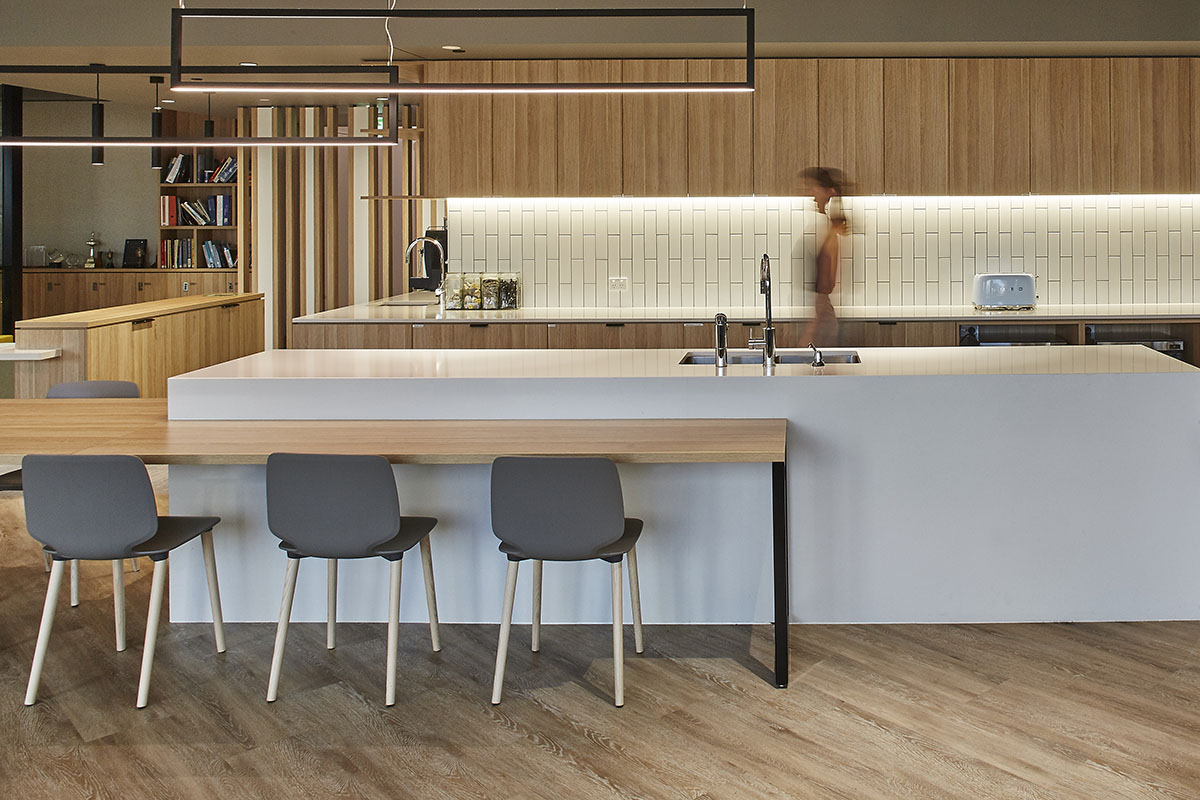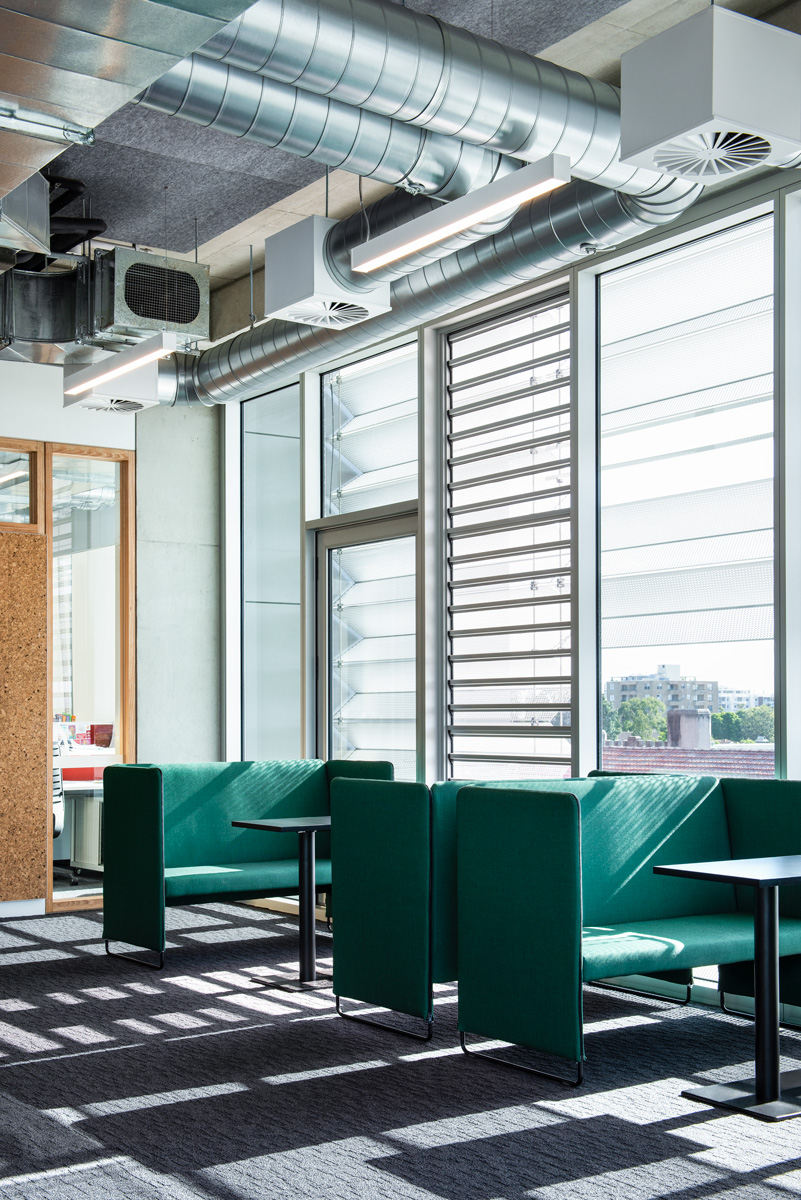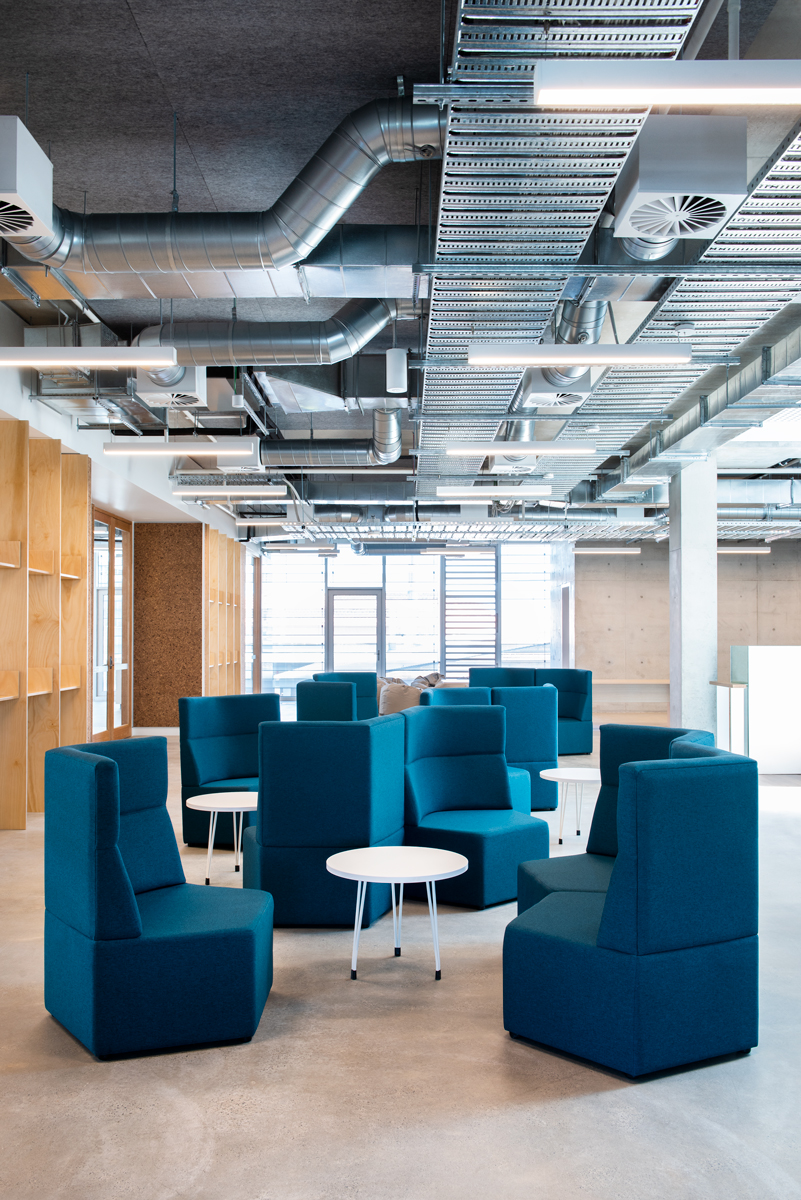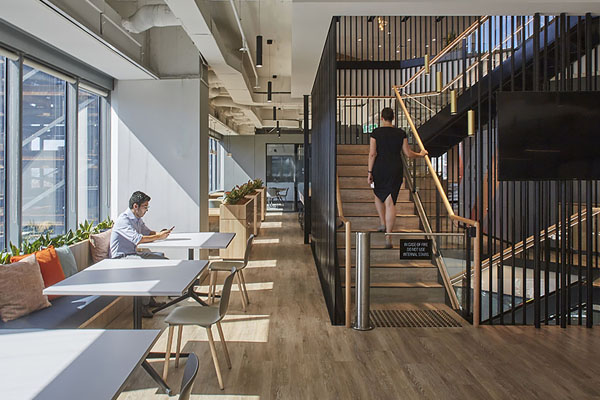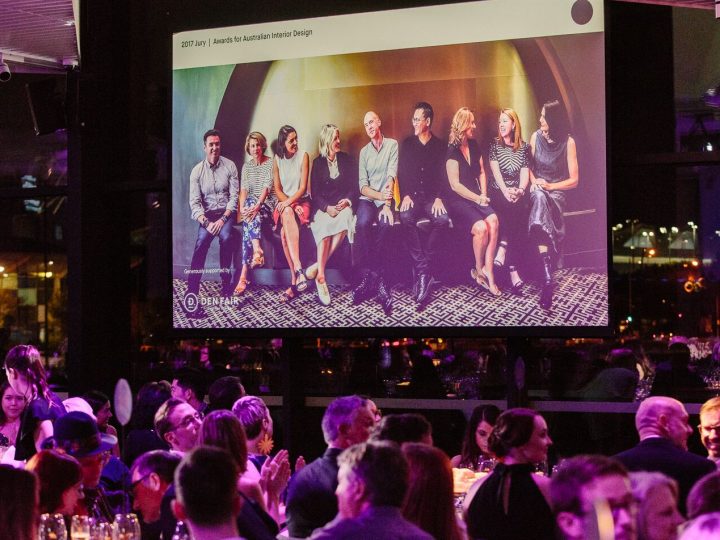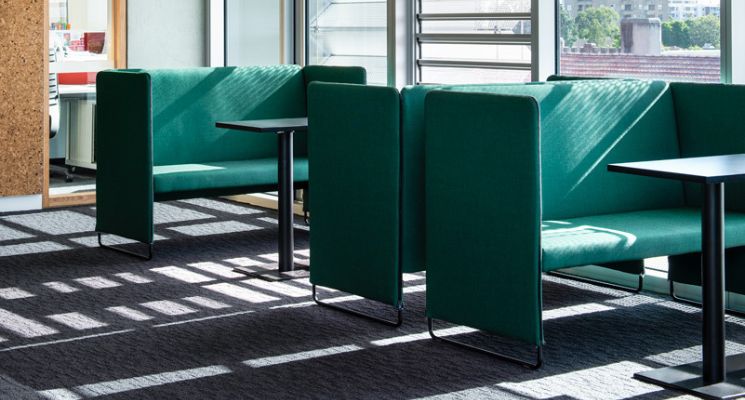
New meaning and purpose in workplace design is becoming increasingly important in workplaces that must support collaboration, productivity, and wellbeing. In today’s fast-paced, ever-changing world, our workspaces are more important than ever.
We spoke with Angela Ferguson, co-founder of Future X Collection and one of Australia’s leading workplace design experts, about the top four ways good design can impact employee wellbeing and experience.
Good design can inspire and motivate
“Colour and texture when used on furniture has a recognised effect on wellness and inspiration in the office,” says Angela. In terms of wellness and belonging, colour theory is often used to align with the client’s vision in their environment. In interior design, colour contributes to the overall look and feel of a space, but also subconsciously communicates what that space should be used for.
Colour can influence mood, behaviour, and productivity, which is why it is critical to select the right colour combination for your environment. For example, warm colours stimulate the brain, encourage action, and direct our attention in the workplace, whereas cool colours like blues and greens are common in workplaces because they elicit positive cognitive and emotional responses.
Good design can boost collaboration and close-knit teams
Social spaces, as well as face-to-face collaboration walls and rooms, are becoming increasingly important in workplace design. In many cases, they are critical to attracting people back to the office. With teams now connecting both in the office and remotely, spaces need to be set up with the right technology to support better collaboration. It is also important for workspaces to be welcoming, comfortable and open, with smaller hubs for teams to come together.
“People are coming to the office primarily to socialise and collaborate now that we’ve seen this formalisation of focus work mainly happening remotely post-pandemic.”
Good design can have health benefits
The design of your workplace can have a significant effect on the wellbeing of your team members. “Health and wellbeing have become top-of-mind as a result of the pandemic, with recent studies showing that approximately 15 to 45% of mental health issues of office workers are attributable to their workplace conditions. This can include things like dark spaces, poor air circulation, and poor ergonomics,” explains Angela.
Angela has firsthand experience with the negative effects that poor design choices can have on health. “I’ve had experience in offices that are completely disconnected from the natural world, and it’s not exactly somewhere people want to spend any length of time.” According to a recent study found that employees seated within 10 feet of a window experienced an 84% reduction in symptoms such as eyestrain, headaches, and blurred vision1.
Good design can make people feel safe
Support your team by providing ergonomic furniture, such as sit-stand desks and height-adjustable chairs, to ensure they can work safely. “Smart businesses are looking at the design of their workspaces and how it can align with different needs for the employees who inhabit it. Providing opportunities for movement is crucial for workplace wellness and safety,” recommends Angela.
When considering the future of the workplace, Angela emphasises the importance of understanding the client’s needs to achieve their desired space. “The ideal workplace should be a true reflection of the business, as well as the brand, culture, and people.”
As workplaces take on a new identity in a post-pandemic world, Business Interiors is enabling engagement, collaboration and culture with intelligent furniture solutions that address the evolving needs of employees and organisations. Contact our Business Interiors expert team to enhance your workplace – we can help with everything from a small refresh to a complete fit-out.
1 Forbes, 2019, ‘How Your Office Space Impacts Employee Well-Being’, <https://www.forbes.com/sites/alankohll/2019/01/24/how-your-office-space-impacts-employee-wellbeing/?sh=364014d864f3>

